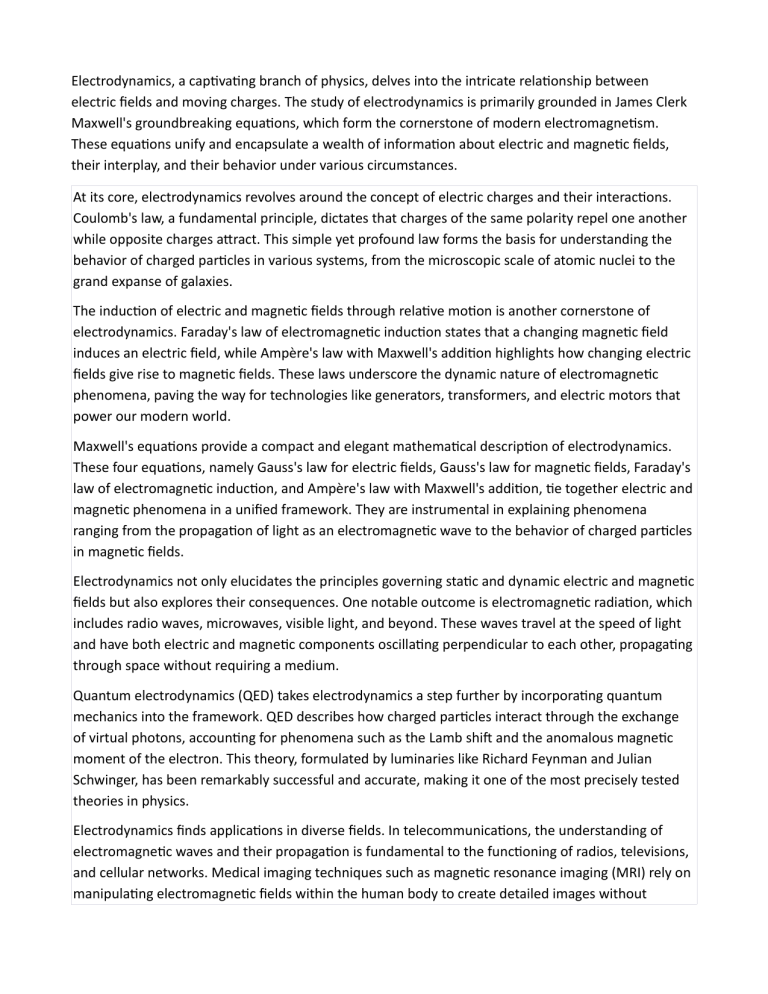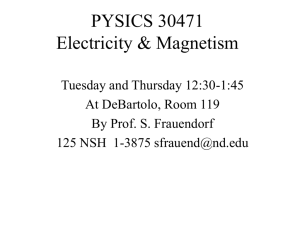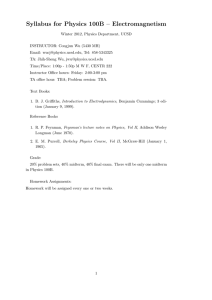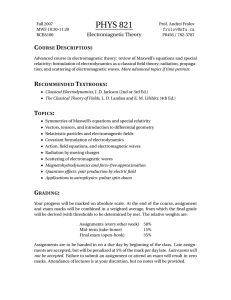
Electrodynamics, a captivating branch of physics, delves into the intricate relationship between electric fields and moving charges. The study of electrodynamics is primarily grounded in James Clerk Maxwell's groundbreaking equations, which form the cornerstone of modern electromagnetism. These equations unify and encapsulate a wealth of information about electric and magnetic fields, their interplay, and their behavior under various circumstances. At its core, electrodynamics revolves around the concept of electric charges and their interactions. Coulomb's law, a fundamental principle, dictates that charges of the same polarity repel one another while opposite charges attract. This simple yet profound law forms the basis for understanding the behavior of charged particles in various systems, from the microscopic scale of atomic nuclei to the grand expanse of galaxies. The induction of electric and magnetic fields through relative motion is another cornerstone of electrodynamics. Faraday's law of electromagnetic induction states that a changing magnetic field induces an electric field, while Ampère's law with Maxwell's addition highlights how changing electric fields give rise to magnetic fields. These laws underscore the dynamic nature of electromagnetic phenomena, paving the way for technologies like generators, transformers, and electric motors that power our modern world. Maxwell's equations provide a compact and elegant mathematical description of electrodynamics. These four equations, namely Gauss's law for electric fields, Gauss's law for magnetic fields, Faraday's law of electromagnetic induction, and Ampère's law with Maxwell's addition, tie together electric and magnetic phenomena in a unified framework. They are instrumental in explaining phenomena ranging from the propagation of light as an electromagnetic wave to the behavior of charged particles in magnetic fields. Electrodynamics not only elucidates the principles governing static and dynamic electric and magnetic fields but also explores their consequences. One notable outcome is electromagnetic radiation, which includes radio waves, microwaves, visible light, and beyond. These waves travel at the speed of light and have both electric and magnetic components oscillating perpendicular to each other, propagating through space without requiring a medium. Quantum electrodynamics (QED) takes electrodynamics a step further by incorporating quantum mechanics into the framework. QED describes how charged particles interact through the exchange of virtual photons, accounting for phenomena such as the Lamb shift and the anomalous magnetic moment of the electron. This theory, formulated by luminaries like Richard Feynman and Julian Schwinger, has been remarkably successful and accurate, making it one of the most precisely tested theories in physics. Electrodynamics finds applications in diverse fields. In telecommunications, the understanding of electromagnetic waves and their propagation is fundamental to the functioning of radios, televisions, and cellular networks. Medical imaging techniques such as magnetic resonance imaging (MRI) rely on manipulating electromagnetic fields within the human body to create detailed images without invasive procedures. Furthermore, the field has given rise to plasma physics, which investigates the behavior of ionized gases under the influence of electric and magnetic fields, holding promise for future energy generation through controlled nuclear fusion. The quantization of electromagnetic fields has also paved the way for the development of quantum technologies. Quantum optics explores how photons interact with matter at the quantum level, leading to advancements in quantum computing, quantum cryptography, and precision measurements beyond classical limits. These technologies harness the intricate interplay between light and matter that electrodynamics unveils. In conclusion, electrodynamics stands as one of the cornerstones of modern physics, unraveling the profound interactions between electric and magnetic fields. From the elegant equations of Maxwell to the quantum realm of QED, this field has transformed our understanding of the physical world and empowered an array of technological advancements that shape our lives today. As we continue to probe deeper into the nature of matter and energy, electrodynamics remains an essential and captivating arena of exploration.



